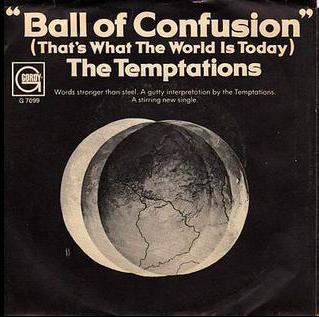Anyone in the mood for some confusion? If so, keep reading. Below are some random quotes I stumbled across while doing a Google news search of the term "synthetic opioids." It didn't take long. The term has been mentioned in the news 22,800 times since... who knows. You try to figure out why Google does or doesn't do something.
"[Isotonitazene is] a manufactured opioid, also called a 'synthetic opioid,' similar to fentanyl but estimated to be even more potent"
"While deaths from other opioids are slowly decreasing, synthetic opioid-involved death rates — excluding methadone — increased by 10 percent from 2017 to 2018"
Prescription opioid and heroin deaths drop, but deaths from synthetic opioids continue to climb
Brorphine is a powerful, new, synthetic [opioid] drug that started increasing this June in the U.S.

Some "Synthetic Opioids."
A couple of questions:
- Do these belong in the same class as fentanyl?
- Do they belong in the same class as the others?
1. No.
2. Unlikely. Here's why...

Table 1. Six different drugs that are classified as "synthetic opioids."
* Pharmaceutical fentanyl is Schedule 2 (High addiction potential, approved medical use). Illicit fentanyl and its analogs are schedule 1 (High addiction potential, no approved medical use).
** Loperamide (Imodium) acts on opioid receptors in the intestine. It does not relieve pain.
Let's ask a couple of other questions.1) Does it make sense to refer to all these drugs as "synthetic opioids?" And 2) is it stupid to do so (Table 2)?

Table 2. The stupidity test
To show how silly this classification is perform the same exercise do the same with antibiotics.
Here is a list of some common antibiotics. You can see how ridiculous the natural-synthetic divide is (Table 3).

Table 3. Some common antibiotics and their sources. * Semisynthetic
Penicillin and amoxicillin are both ß-lactam antibiotics. Although amoxicillin is broader spectrum than penicillin, they kill some of the same bacteria, are structurally similar, and operate by the same mechanism. But penicillin is made by fermentation of a mold and is therefore "natural," while amoxicillin is made by a synthetic reaction, making it synthetic (1). Who cares?
Erythromycin and azithromycin are almost identical in structure and operate by the same antibacterial mechanism. The primary difference is that azithromycin is safer (2). But erythromycin was isolated from a streptomyces bacterial broth, making it natural. Azithromycin does not exist in nature. It is made in the lab, so it's synthetic. Who cares?
Similarly, while tetracycline was isolated (also from streptomyces), doxycycline, notably useful for treating Lyme, is synthesized from oxytetratracycline, a naturally occurring tetracycline analog, making it synthetic.
Here's where the absurdity of these terms becomes obvious. Can you imagine a doctor stopping to consider whether to prescribe tetracycline because it's naturally occurring instead of doxycycline, which is not? Amoxcillin (synthetic) is more widely prescribed because it is a better antibiotic than penicillin (natural).
No way. Not a single doctor on earth would choose an antibiotic based of its source. To do so would be medically absurd. Most are probably unaware of the difference, which is just fine. It makes no difference where the drug comes from. The terms "natural" and "synthetic" are a distinction without a difference.
WHY iS THE DISTINCTION USED FOR OPIOIDS?
There are a few possible reasons that opioids are characterized as synthetic, semisynthetic, or natural:
1. Stupidity
2. Ignorance.
Or maybe there is a third. Lumping strong pain drugs, weaker pain drugs, a drug to manage withdrawal, and a medicine for diarrhea artificially inflates the numbers of deaths from this class–– something that the anti-opioid Kolodnys zealots over the world take great pride in doing. It is quite possible, if not likely, that the term is used to intentionally used to confuse people about our failure to put a dent in illegal fentanyl – the source of most overdose deaths. So, by throwing a bunch of other drugs into the same category – something the CDC has been doing for years – maybe it's not so easy for people to really figure out what drugs are causing the deaths – something I've written about before (See Fentanyl 101- Let's Clean Up The Terminology).
WHAT'S THE SOLUTION?
Here's a suggestion. Look at Table 4.

Table 4. "Fentanoids." A selection of fentanyl derivatives. Carfentanil, perhaps the worse one out there is Schedule 2 because it has a medical use - tranquilizing elephants.
The drugs in Table 4 all belong there. They are all clearly analogs of fentanyl, both legal and not, some more potent and some less. This table makes much more sense than Table 1, where a group of drugs, some of which have no business being included, are lumped together.
HOW ABOUT "FENTANOIDS?"
Although I hate the term "opioid" because it artificially categorizes drugs according to their source (a big no-no) it makes sense here. "Fentanoids" are synthetic (irrelevant) but also structurally and pharmacologically similar. These drugs scientifically belong in the same table. Why not put them together and call them something other than "synthetic opioids," which is scientifically ambiguous, or "illicit fentanyl and its analogs," which doesn't exactly roll off the tongue,
How about it? Let's clean up this mess. A term like "fentanoids" will do the job nicely. Think about it.
NOTES:
(1) Although it is an artificial distinction, the term "semi-synthetic" is commonly used. It means that the drug is made by modification of a natural product. Who cares?
(2) Azithromycin is safer than erythromycin because it has fewer drug-drug interactions, making it safer.



